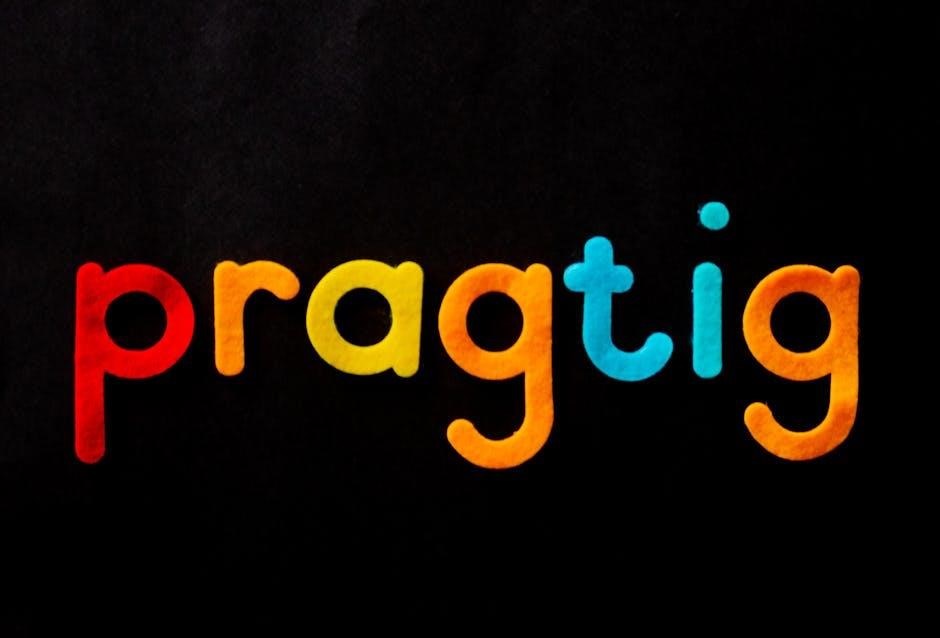Troubleshooting Modine heaters requires understanding common issues like power supply, gas flow, and airflow problems․ Regular maintenance ensures efficiency, safety, and optimal performance, minimizing downtime and extending unit lifespan․
1․1 Importance of Regular Maintenance
Regular maintenance is crucial for ensuring the optimal performance and longevity of Modine heaters․ It helps prevent unexpected breakdowns, improves energy efficiency, and reduces repair costs․ By inspecting components like the heat exchanger, gas valve, and ventilation system, potential issues can be identified early․ Cleaning the unit and ensuring proper airflow are simple yet effective steps to maintain functionality․ Additionally, regular checks can prevent safety hazards, such as carbon monoxide leaks or fire risks․ A well-maintained heater operates more efficiently, lowering utility bills and providing consistent heating․ Neglecting maintenance can lead to premature wear and costly repairs, making routine upkeep essential for reliability and safety․
1․2 Understanding Common Issues
Identifying common issues with Modine heaters is the first step in effective troubleshooting․ Power supply problems, such as tripped circuit breakers or loose connections, often prevent the heater from functioning․ Gas supply issues, like closed valves or blockages, can halt ignition․ Airflow obstructions, including clogged vents or dirty filters, reduce efficiency and may cause overheating․ Ignition failures, limit switch malfunctions, and communication faults between twin units are also prevalent․ Familiarizing yourself with these issues helps in diagnosing and resolving them promptly․ Understanding these common problems ensures safer and more efficient operation, minimizing downtime and extending the heater’s lifespan․ Early detection of these issues is key to maintaining optimal performance and safety․

Common Problems with Modine Heaters
Modine heaters often face issues like power supply disruptions, gas supply blockages, and airflow obstructions․ These problems can lead to inefficient heating and potential safety hazards if unresolved․
2․1 Power Supply Issues
Power supply issues with Modine heaters can stem from tripped circuit breakers or loose connections․ Ensure the heater is properly plugged in and check the circuit breaker․ Faulty wiring or blown fuses may also disrupt power․ If the issue persists, consult a professional to inspect the electrical system․ Regular checks can prevent unexpected outages, ensuring consistent heating performance․ Always follow safety guidelines when handling electrical components to avoid hazards․ Addressing power supply problems promptly helps maintain heater efficiency and reliability․ Additionally, verifying the voltage supply matches the heater’s specifications is crucial for optimal operation․ Power issues can often be resolved with simple troubleshooting steps before seeking advanced assistance․
2․2 Gas Supply Problems
Gas supply issues in Modine heaters can lead to ignition failures or inconsistent heating․ Ensure the gas valve is fully open and check for blockages in the gas line․ Sediment or debris may obstruct the flow, requiring professional cleaning․ Faulty regulators or damaged connectors can also restrict gas supply․ If the heater fails to ignite, inspect the pilot light and ignition system․ Proper ventilation is essential to prevent gas buildup and ensure safe operation․ Addressing gas supply problems promptly prevents potential hazards and maintains efficient heating performance․ Always follow safety guidelines when handling gas components to avoid risks․ Regular inspections can help identify issues before they escalate, ensuring reliable operation of the heater․
2․3 Airflow Obstructions
Airflow obstructions are a common issue in Modine heaters, often leading to reduced efficiency or complete shutdown․ Ensure vents and grilles are unobstructed, as blockages can restrict proper air circulation․ Check for dust buildup or debris in filters and ducts, as these can impede airflow․ If the unit is installed in a confined space, ensure adequate clearance to prevent restricted air movement․ Additionally, verify that all dampers are fully open and functioning correctly․ Insufficient airflow can cause overheating, triggering error codes like six flashes․ Regular cleaning of filters and ducts can prevent such issues․ Addressing airflow problems promptly ensures consistent heating performance and prevents potential safety hazards․ Always follow manufacturers’ guidelines for maintaining proper ventilation․

Troubleshooting Error Codes
Modine heaters use error codes to indicate specific issues․ Five flashes signal a twin communications fault, often related to the thermostat or circuit board․ Six flashes point to overheating, possibly due to blocked vents or poor airflow․ Two flashes indicate pressure switch problems, which may require professional attention․ Three flashes suggest an open limit switch, a safety feature that prevents operation when a potential hazard is detected․ Addressing these codes systematically, starting with basic checks like power supply and ventilation, can help resolve issues efficiently․ Consulting the user manual and online resources is crucial for accurate diagnosis and safe repairs․

3․1 Five Flashes: Twin Communications Fault
A five-flash error code on your Modine heater indicates a twin communications fault․ This occurs when the control board loses communication with the thermostat or another critical component․ To troubleshoot, first, ensure the thermostat is functioning correctly and properly connected to the heater․ Check the wiring for any signs of damage or loose connections․ Verify that the 24VAC power supply to the system is stable and functioning as required․ If the issue persists, reset the thermostat by removing it and using a jumper wire to test the system․ Consult the user manual for specific instructions, as improper wiring or a malfunctioning control board may require professional assistance․ Always prioritize safety and refer to technical resources if unsure․

3․2 Six Flashes: Overheating Indication

A six-flash error code on your Modine heater signifies an overheating issue․ This typically occurs when the unit’s limit switch is triggered, indicating excessive heat buildup․ Check the limit switch for proper operation and ensure it is not stuck or malfunctioning․ Verify that all vents and airflow pathways are unobstructed, as restricted airflow can cause overheating․ Ensure the thermostat is set correctly and not causing excessive heating demands․ If the issue persists, inspect the heat exchanger for blockages or damage․ Additionally, ensure the unit is installed at the correct altitude and that all components, such as the gas valve and combustion chamber, are functioning properly․ Refer to the technical manual for detailed troubleshooting steps and consider consulting a professional if the problem recurs․ Always prioritize safety to avoid potential damage or hazards․
3․3 Two Flashes: Pressure Switch Issues
A two-flash error code on a Modine heater indicates a pressure switch issue․ This occurs when the pressure switch fails to open or close properly, disrupting the unit’s operation․ First, check if the venting system is clear of obstructions, as blocked vents can prevent the pressure switch from functioning correctly․ Ensure the exhaust fan is operating and that all connections are secure․ If the issue persists, inspect the pressure switch for damage or corrosion; Clean or replace it as needed․ Additionally, verify that the unit’s drain system is functioning properly to prevent pressure imbalances․ If the problem remains unresolved, consult a qualified technician to diagnose and repair the pressure switch or related components․ Always follow safety guidelines when performing troubleshooting steps․
3․4 Three Flashes: Limit Switch Open
A three-flash error code on a Modine heater indicates that the limit switch is open․ This safety device activates when the heater overheats, shutting it down to prevent damage․ Check for restricted airflow, such as blocked vents or dirty filters, which can cause high temperatures․ Ensure the unit is properly installed and that all vents are clear of obstructions․ Verify that the heat exchanger is clean and functioning correctly․ If the issue persists, inspect the limit switch for damage or malfunction․ Clean or replace it as needed․ Always ensure proper ventilation and maintenance to prevent overheating issues․ If the problem recurs, consult a professional technician for further assistance․ Regular inspections can help avoid this issue in the future․

General Maintenance Tips
Regularly inspect and clean filters, ensure proper ventilation, and check for blockages in vents․ Maintain the heat exchanger and ensure all components are functioning correctly for optimal performance․
4․1 Checking the Heat Exchanger
Inspecting the heat exchanger is crucial for ensuring safe and efficient heater operation․ Over time, it may accumulate dirt or corrosion, leading to reduced performance or potential hazards․ Use a soft brush or vacuum to gently remove debris․ Check for cracks or signs of wear, as these can cause dangerous gas leaks․ If damage is detected, replace the heat exchanger immediately to prevent carbon monoxide issues․ Regular cleaning prevents premature failure and maintains optimal heat output․ Always follow manufacturer guidelines and safety precautions during inspection and maintenance to ensure the heater operates effectively and safely․
4․2 Ensuring Proper Ventilation
Proper ventilation is essential for the safe and efficient operation of Modine heaters․ Always ensure that vent pipes are clear of obstructions, such as dust or debris, to maintain airflow․ Check for any blockages in the venting system, as these can lead to reduced performance or safety hazards․ Ensure the vent termination is unobstructed and free from damage․ If the system is not venting properly, it may cause negative pressure issues, leading to incomplete combustion or carbon monoxide buildup․ Regularly inspect the venting components and ensure they meet local codes and manufacturer specifications․ Proper ventilation not only enhances efficiency but also prevents potential risks associated with harmful fumes․ Always refer to the technical manual for specific guidelines on ventilation setup and maintenance to ensure optimal system performance and safety․
4․3 Cleaning the Unit Regularly
Regular cleaning is crucial for maintaining the efficiency and safety of your Modine heater․ Dust and debris can accumulate over time, potentially causing blockages or reducing airflow․ Start by turning off the power supply and allowing the unit to cool completely․ Use a soft brush or vacuum cleaner to gently remove dust from the exterior and interior components, including the heat exchanger and fan․ Avoid using harsh chemicals, as they may damage the unit․ Inspect the burners for any blockages and clean them with a small brush if necessary․ Proper cleaning ensures proper operation, prevents overheating, and extends the lifespan of the heater․ Always refer to the technical manual for specific cleaning guidelines to maintain safety and performance․

Pilot Light and Ignition Issues
Pilot light and ignition problems are common in Modine heaters․ Issues like the pilot light not staying lit or ignition failure can disrupt heating․ Check the gas supply and ensure proper ventilation․ If the problem persists, inspect the gas valve and ignition components․ Referencing error codes can help identify specific issues․ Always follow safety guidelines and consider professional assistance if troubleshooting efforts fail to resolve the problem․ Regular maintenance can prevent such issues from arising․ Ensure all connections are secure and clean to maintain proper ignition and operation․
5․1 Pilot Light Not Staying Lit
If the pilot light on your Modine heater refuses to stay lit, it could indicate issues with the gas supply or ignition components․ First, ensure the gas valve is fully open and functioning properly․ Check for any blockages in the gas line or pilot orifice, as dirt or debris can disrupt the flow․ Verify that the venting system is clear to ensure proper airflow․ If the problem persists, inspect the thermocouple for damage or misalignment, as it may fail to signal the gas valve to stay open․ Consult the user manual or contact a professional if troubleshooting steps do not resolve the issue․ Regular maintenance can help prevent such problems from recurring․ Always prioritize safety when handling gas appliances․
5․2 Ignition Failure
Ignition failure in Modine heaters can prevent the unit from operating effectively․ This issue often arises due to faulty spark electrodes or a malfunctioning ignition module․ Ensure the spark gap is properly set and clean, as dirt or debris can hinder ignition․ Check the igniter electrode for wear or damage and replace it if necessary․ Additionally, verify that the gas valve is functioning correctly and the gas pressure is within the recommended range․ If the igniter is not sparking, consult the user manual for troubleshooting steps or contact a certified technician․ Regular inspection and maintenance of ignition components can prevent such failures and ensure reliable heater operation․ Addressing ignition issues promptly is crucial for safety and efficiency․
5․3 Gas Valve Malfunction
A gas valve malfunction can prevent Modine heaters from igniting or functioning properly․ Symptoms include the heater failing to start, inconsistent flames, or complete shutdown․ Check if the gas valve is fully open and ensure proper gas pressure․ If the valve is stuck or faulty, it may require cleaning or replacement․ Verify electrical connections to the gas valve for any loose wires or corrosion․ If issues persist, consult a professional to inspect and repair the valve․ Regular maintenance, such as cleaning and inspecting the valve, can help prevent malfunctions․ Always follow safety guidelines when working with gas components to avoid hazards․ Addressing gas valve problems promptly ensures safe and efficient heater operation․

Advanced Troubleshooting Steps
Advanced troubleshooting involves testing components like the limit switch, inspecting the pressure switch, and addressing twin communication faults․ These steps ensure efficient heater operation and safety․
6․1 Testing the Limit Switch
Testing the limit switch involves checking its electrical continuity and ensuring it operates correctly․ A faulty limit switch can cause the heater to shut down unexpectedly․ To test, use a multimeter to measure resistance across the switch terminals․ If the reading indicates an open circuit, the switch may need replacement․ Additionally, inspect the switch for physical damage or corrosion․ Ensure proper installation and alignment, as misalignment can trigger false trips․ Refer to the technical manual for specific procedures, and always disconnect power before performing tests to avoid electrical hazards․ Proper function is crucial for safe and efficient heater operation․ Regular testing prevents unexpected failures․
6․2 Inspecting the Pressure Switch
Inspecting the pressure switch is crucial for ensuring proper heater operation․ The pressure switch monitors venting system pressure, shutting off the heater if unsafe conditions arise․ To inspect, first, disconnect power to the unit for safety․ Check the switch for visible damage, corrosion, or blockages․ Ensure the tubing connecting the switch to the venting system is secure and free of kinks or obstructions․ Use a multimeter to test electrical continuity across the switch terminals․ If the switch fails to open or close properly, it may need replacement․ A faulty pressure switch can cause error codes, such as two flashes, indicating it remains closed․ Cleaning the vent and tubing can resolve blockage-related issues․ Always refer to the manufacturer’s manual for specific testing procedures․ Proper function is essential for safe and efficient heater performance․ Regular inspections help prevent unexpected shutdowns and ensure reliable operation․
6․3 Addressing Twin Communication Faults
Twin communication faults occur when two heating units fail to synchronize, often indicated by five error code flashes․ To resolve this, ensure both units are powered and connected properly․ Check the communication wires for damage or loose connections․ Verify that the 24VAC supply to both units is in phase to maintain synchronization․ If issues persist, test the communication circuit using a multimeter․ Ensure the control boards are compatible and functioning correctly․ Resetting both units by disconnecting power for 30 seconds may resolve temporary faults․ If the problem remains, consult the technical manual or contact Modine’s support for advanced assistance․ Proper communication is vital for dual-unit systems to operate efficiently and safely․ Regular checks can prevent such faults from recurring․

Technical Support and Resources
Access Modine’s technical manuals, troubleshooting guides, and online support for comprehensive assistance․ Contact customer service for expert help, and explore forums for peer advice and solutions․
7․1 Accessing Modine’s Technical Manuals
Modine’s official website offers downloadable technical manuals for various heater models․ These manuals provide detailed troubleshooting guides, installation instructions, and maintenance tips․ Users can search by model number or product type to find specific documentation․ Additionally, the manuals include error code explanations and step-by-step repair procedures․ For advanced issues, diagrams and wiring schematics are available to assist technicians․ Regular updates ensure the information stays current with the latest models and standards․ Accessing these resources helps users diagnose and resolve issues efficiently, minimizing downtime and ensuring safe operation of their Modine heaters․
7․2 Contacting Customer Support
For immediate assistance with Modine heaters, contacting customer support is a reliable option․ Modine offers dedicated phone lines, email support, and live chat services for technical inquiries․ HVAC technicians can also access exclusive support channels․ The support team provides guidance on troubleshooting, repair, and maintenance, ensuring issues are resolved promptly․ Additionally, Modine’s website features a comprehensive FAQ section and resource library to address common concerns․ Customers can also schedule service appointments through authorized distributors․ This direct support ensures users receive accurate and timely help, maintaining their heater’s performance and longevity․ Regular updates and training programs for support staff ensure expert-level assistance is always available․
7․3 Online Forums and Communities
Online forums and communities are valuable resources for troubleshooting Modine heaters․ Platforms like Reddit, HVAC forums, and specialized heating communities offer real-time feedback from experienced technicians and users․ These spaces often discuss common issues, error codes, and repair techniques, providing practical solutions․ Many forums feature detailed threads on Modine-specific problems, such as ignition faults or communication errors, with step-by-step fixes․ Additionally, Modine enthusiasts and professionals frequently share diagnostic tips and maintenance advice․ Engaging with these communities can provide peer-reviewed solutions and access to shared documentation, enhancing your troubleshooting efforts․ They also serve as a space to ask questions and receive tailored guidance for specific heater models and scenarios․
Regular maintenance and understanding common issues are key to efficient Modine heater operation․ Troubleshooting error codes and addressing problems promptly ensures safety, reliability, and optimal performance over time․
8․1 Summary of Key Troubleshooting Steps
Troubleshooting Modine heaters involves identifying common issues like power supply problems, gas flow restrictions, and airflow obstructions․ Always start by checking the basics, such as ensuring the unit is properly powered and the gas valve is open․ Verify ventilation systems are clear and functional to prevent overheating․ Familiarize yourself with error codes, as they provide specific insights into faults, such as twin communication faults or limit switch issues․ Regular maintenance, including cleaning the unit and inspecting the heat exchanger, is crucial for long-term efficiency․ If issues persist, consult technical manuals or contact Modine’s customer support for expert assistance․ Consistent upkeep ensures safe and reliable operation․ Always follow safety guidelines when servicing the heater to avoid potential hazards․ By addressing problems promptly and maintaining the unit properly, you can extend its lifespan and performance․ If unsure, seek professional help to resolve complex issues․
8․2 Preventative Measures for Future Issues
Preventing future issues with Modine heaters begins with a consistent maintenance routine․ Regularly inspect and clean the unit to remove dust and debris, which can obstruct airflow and reduce efficiency․ Ensure proper ventilation by checking vents and chimneys for blockages, as poor airflow can lead to overheating and damage․ Schedule annual professional inspections to identify and address potential problems before they escalate․ Keep the heat exchanger in good condition to prevent corrosion and ensure safe operation․ Familiarize yourself with error codes and troubleshooting steps to quickly resolve minor issues․ By taking these proactive measures, you can extend the lifespan of your heater, maintain optimal performance, and avoid costly repairs․ Stay informed through Modine’s technical resources and community forums for the latest tips and updates․


















































